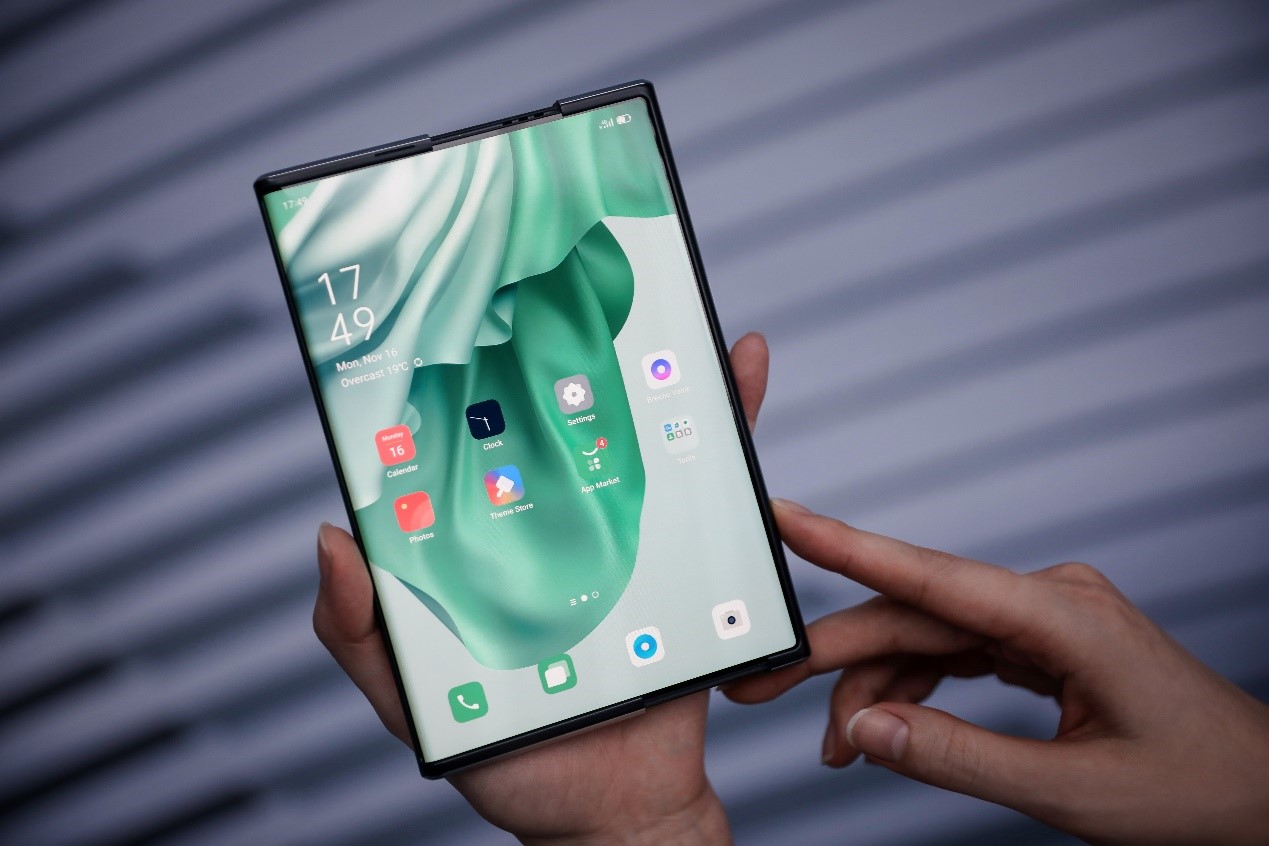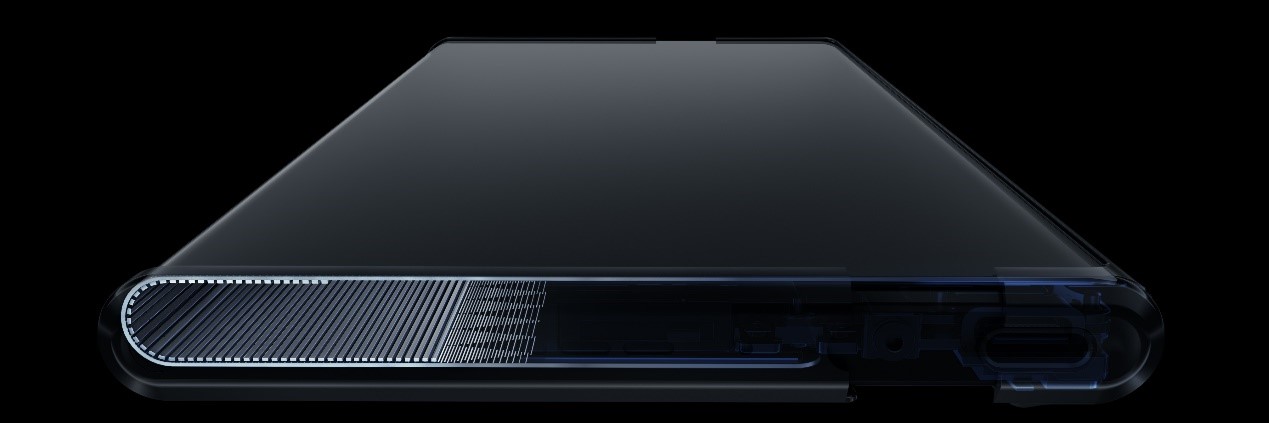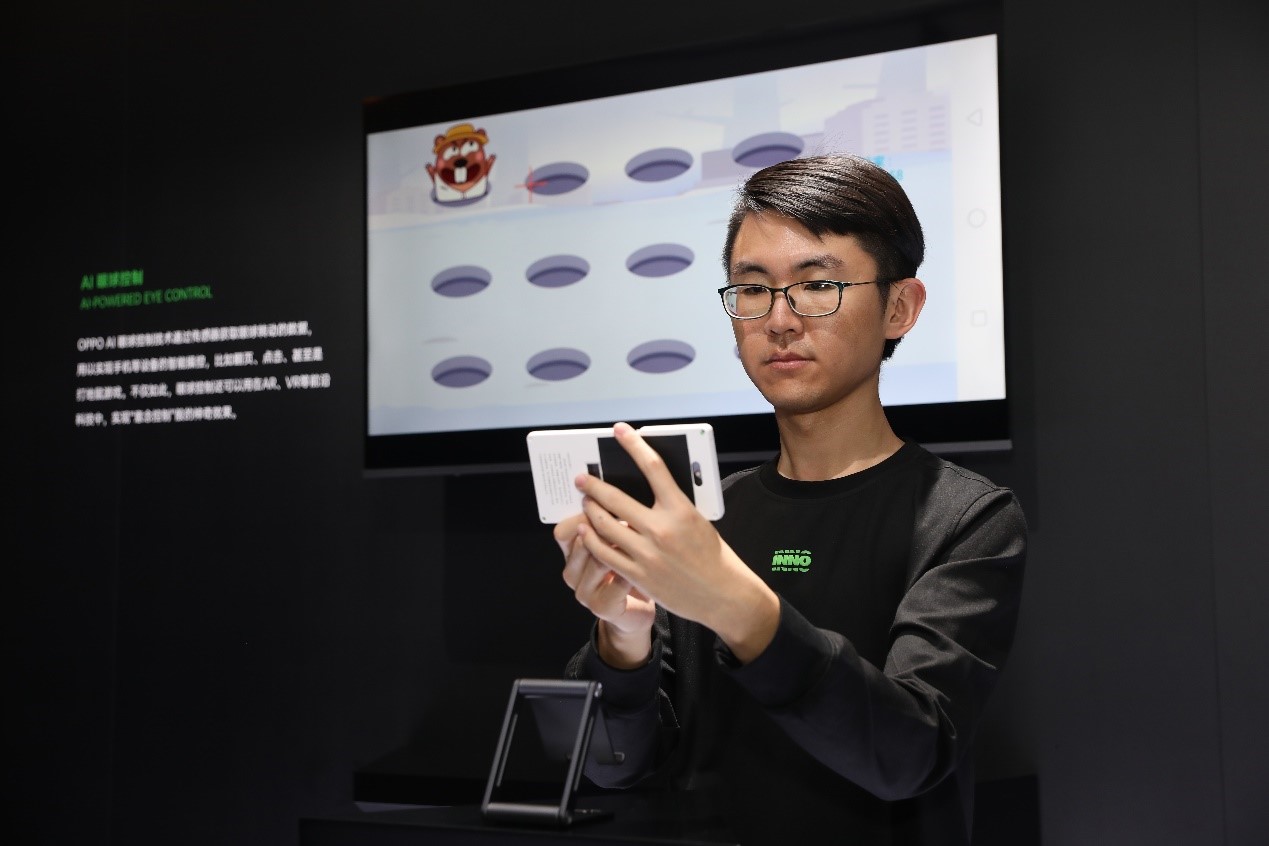Affiliate links on Android Authority may earn us a commission. Learn more.
What's next for smartphone screens?

New revolutionary technology always meets with skepticism in its early days. And flexible OLED technology is no exception.
From its birth in the lab to its debut, the invention of flexible OLED technology seemed to promise a science-fiction-like future for everyone. However, as the adoption of flexible OLED technology increases, it is also being met with rising skepticism. Critics say it is expensive, its surface is fragile, and warn it will form an obvious crease. In truth, flexible OLED technology always sounded more like an expensive toy rather than a practical personal device.
See also: How OPPO keeps your information safer with ColorOS
Moreover, given the weight and size of most of the current mainstream flexible screen solutions, they should be categorized as tablets. Do we really have to adopt a device 1-1.5x the weight of a regular phone just for a few more use cases? All this discussion has led many to wonder: do we really need a changeable screen? Is the flexible screen the answer to a fake need created by phone makers?
OPPO INNO DAY 2020 may have ended this debate. The smartphone brand OPPO gave a different answer to all these questions when it revealed a brand-new, rollable concept handset.
It’s more than a screen
Remember the time it took to get from the computer to the laptop? And then from mobile phones to smartphones? Now, get ready to embrace the next change.
This rollable concept handset can be difficult to describe, but seeing it in action is magical. Its retractable display seems to tell people that this is exactly what the future personal device we have been anticipating should look like. It is portable in size and efficient in function. It can change its form as needed, catering to most of the needs in our everyday work and life.
As seen in the demo video, the app interface — including browser, video, and album apps — adapts automatically as the screen unfolds. It fits the screen that ranges from 6.7 inches to 7.4 inches in size. If we take seven inches as the size that distinguishes a tablet from a cell phone, this rollable device is a perfect crossover that seamlessly combines the two form factors.
When it bends, the phone provides a zero-crease experience rarely seen before thanks to the constant force generated by OPPO’s RollMotor powertrain, 2-in-1 plate support substrates, and OPPO’s self-developed Warp Track high-strength screen laminate. Together with the linear patterns etched on the surface, the Warp Track laminate greatly increases the resilience of the display as it bends while providing sufficient support. However, it is still unclear whether the solution achieves a high degree of reliability as OPPO has not disclosed many details.
Meanwhile, OPPO says this unique form factor also introduces more variability to the design of antennas and the battery. With a rollable screen and a powertrain structure, it’s not hard to imagine that this device needs a large battery. Although OPPO did not explain more in this aspect, given OPPO’s previous capabilities in charging technology, we believe a satisfying solution can be expected.

Whilst the sleek industrial design catches your eye, it is the rollable concept that captures the imagination. This rollable personal device is literally “unfurling” a new era of human-machine interaction with its variable screen.
We are entering a new phase of Human-Machine Interface
Let’s have a quick review of the historical context of HMI Phases.
In the first stage — Simple — HMI focused on the personal device itself. A phone was just a phone. You pushed buttons to dial a number and make a call. Computers were owned by laboratories and used by many people. We “communicated” with them chiefly through the command line, and the learning curve was quite steep.
Then came the Natural Human-Machine Interface phase. SinceXerox invented the first graphical user interface in the 1970s, the design of computer interfaces gradually became more people-oriented, shifting to a more natural and intuitive approach. This development saved people the cost of learning how to use the machine and contributed to the mass adoption of computers and other digital devices.
This stage continued until the present where we can unlock our devices with a fingerprint. We can interact with the screen by touch or we can navigate the interface by voice command. We can also make a call with just a gesture or a few spoken words. The machine or device starts to know who its user is and uses that information to enhance its usability, providing us with a richer and safer experience.
The third stage is the era of Integrated Human-Machine Interface. We are already starting to see early innovations at this stage. Take the rollable concept handset we just talked about and the CybeReal AR application OPPO has just introduced at OPPO INNO DAY 2020. The app utilizes all kinds of data, including IMU, GPS, Wi-Fi, and Bluetooth to better understand the location of a user and their surrounding environment. In this way, it enables real-time high-precision localization and scenario recognition.
Imagine a day in the future when a computer or personal device can use cues from your environment, your own status, and even your mood to anticipate your needs and actions. When you need to work, your device will extend, enabling you to work efficiently on a larger screen. When you go on a trip, it may retract, becoming a wristband that can tell you how to reach the destination via bone conduction. When you are at home, most of the time you can scroll through content on the device with your eyes without the need to use your hands.

In this stage, we ultimately need to address how to enable billions of screens and smart devices — as well as endless amounts of ambient information — to work better with people, so that people become “people” once more, rather than just “users” who have been objectified by computing and deprived of attention. That’s why a smartphone manufacturer like OPPO is gradually transforming itself into a technology company.
A brand-new future for us and technology
In 1993, Mark Weiser questioned interactive forms like voice assistants, VR, 3D interfaces, graphical interfaces, and multimedia in an article titled The World Is Not a Desktop. He made a very important point:
The computer as a tool should not intrude on your consciousness, it should blend seamlessly into the environment, allowing people to focus on their tasks, not the tool.
This is very similar to the view OPPO put forward at OPPO INNO DAY 2020. Tony Chen, Founder and CEO of OPPO, said that technology is the means while people are the ends.
Although these two ideas are nearly 30 years apart, what remains unchanged is that we need to explore our relationship with computers, and even with technology. Looking at the present day, Weiser’s fears are becoming a reality. While the world has not been turned into a gigantic computer, we are being surrounded by a myriad of devices and screens. Have they really made our lives easier? Our attention, a valuable resource, is being consumed by endless information. Is this really the technology-led future we want?
Of course, this doesn’t mean that we need to abandon technology. It is just a temporary issue in its rapid development. Companies like OPPO are starting to reflect on the current situation by thinking about technology in a new way and offering an alternate lifestyle that still embraces technology through their innovative series of concept products.
We sincerely hope, whether it is Mark Weiser’s claim that “the most profound technologies are those that disappear” or OPPO’s vision of technology “to empower people, to capture the beauty around the, and to unleash their imagination of the future,” these versions of the future will happen sooner rather than later.
Back to the question we posed in the beginning: what’s next for smartphone screens? OPPO is preparing for a revolution in which screens bend around our lives instead of the other way around, and that seems like a solid starting point.